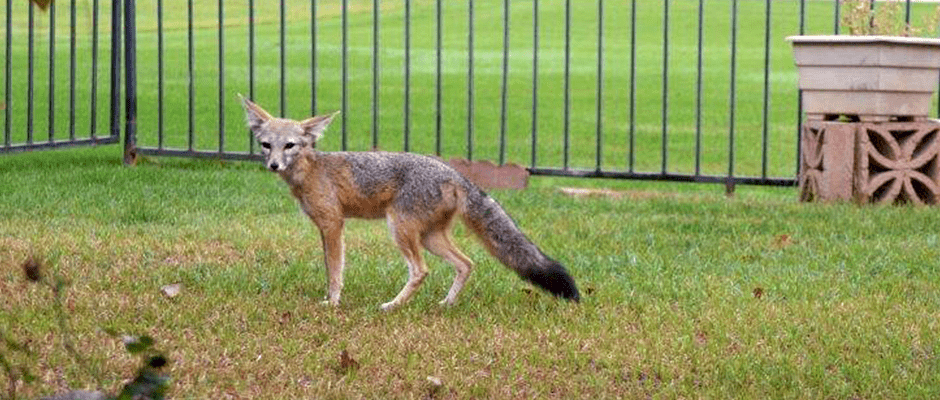Share this article
Mange outbreak imperils urban kit foxes
Endangered by habitat loss across its range, the San Joaquin kit fox (Vulpes macrotis mutica) now faces another deadly threat. Sarcoptic mange has been spreading swiftly through its urban population in Bakersfield, Calif., and researchers are discovering how in their effort to end the epidemic.
“There was a single introduction at some point into the kit fox population, and since then it’s spread from kit fox to kit fox,” said Brian Cypher, associate director and research ecologist with California State University-Stanislaus’ Endangered Species Recovery Program and first author on the paper in the Journal of Wildlife Diseases. “In areas where foxes were denser, we were seeing a lot of transmission.”
Cypher has been working with veterinarians from the California Department of Fish and Wildlife and epidemiologists at the University of California, Davis to investigate the origin and distribution of the mange. During the summer of 2015 and 2016, they surveyed Bakersfield for kit fox scat and analyzed it for signs of mites that carry the disease. They also set up field cameras throughout the city to capture images of mange-ridden foxes over seven nights.
The research team concluded that the illness may have entered the Bakersfield kit fox population just once, possibly through coyotes, and moved through the city according to changes in the kit fox’s population density. It started and mushroomed in the northern part of the city where the species was most concentrated, researchers determined, but by the second year, the disease seemed to disappear from there because the number of vulnerable individuals decreased. Some of the foxes died from the illness. Others were treated medically, so they were no longer susceptible.
“If you get into an area and treat enough animals with a preventative measure and reduce the density of susceptible animals, maybe it’ll break the chain of transmission and knock it out,” Cypher said.
Since then, however, the kit fox population has increased slightly in the northern region, and so has the mange.
Cypher and his colleagues are now testing special collars that could exterminate mites and protect the foxes for up to five months. This summer, they’ll explore whether treating the animals’ dens with pesticides or desiccating air could help combat the mange. The researchers are also trying to identify the threshold number of susceptible individuals that a population would have to be treated down to in order to stop the epidemic.
Bakersfield supports the third largest population of San Joaquin kit foxes, up to 400 of the total 3,000, Cypher said. The mange that has swept across the city and infected over half of this population kills them within three or four months if left untreated.
“We’ve been doing our best to respond to reports and get animals treated,” Cypher said. “We’ve had a great response from the public. We were afraid they would view them as little bags of disease, but we have found that people call us concerned about the welfare of the animals and are trying to help.”
Header Image: A healthy adult male San Joaquin kit fox stands outside a gate in Bakersfield, Calif.








